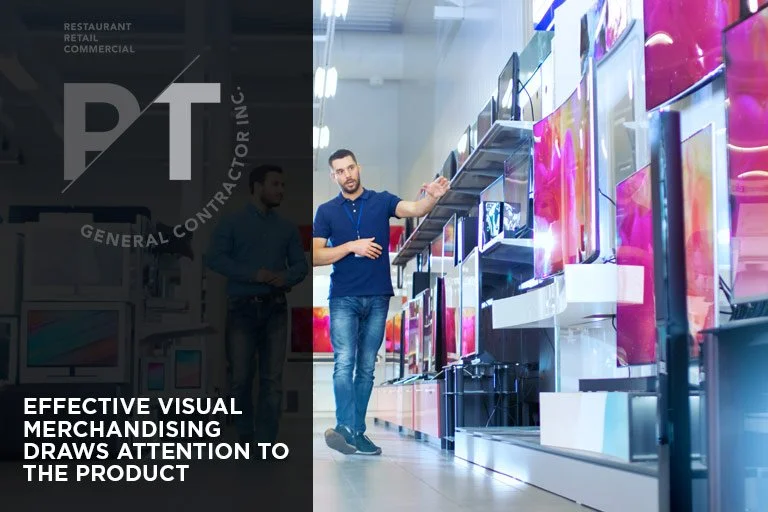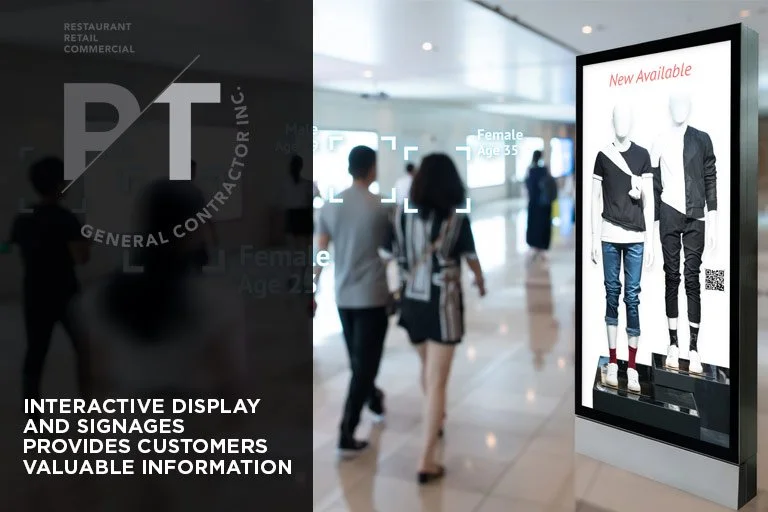Retail Design: Crafting Spaces that Elevate the Customer Experience
Designing a retail space is far more than choosing the right fixtures and paint colours. It's about crafting an environment that makes customers feel welcomed, engaged, and inspired. A thoughtful retail store design can transform the act of shopping from a routine errand into an enjoyable and memorable experience.
By strategically considering elements like layout, lighting, sensory aspects, and technology, retailers can create spaces that not only look the part but also foster customer loyalty, increase sales, and boost a brand's overall image.
The Power of First Impressions
Storefront Design: The storefront is the customer's first point of contact with a retail brand. An attractive window display and clear, inviting signage can significantly impact a potential customer's decision to enter. These elements should capture the essence of the brand and the intrigue of the products within, acting as a silent invitation to explore further.
Entryway: Beyond the storefront, the entryway sets the tone for the customer's in-store experience. A welcoming, clearly defined entrance signals to customers that they are entering a thoughtfully curated space. It's crucial for the entryway to be clutter-free and navigable, offering a glimpse of what's to come and encouraging further exploration.
Layout and Flow
Store Layout Types: Retail layouts such as grid, loop, and free-flow have their advantages and challenges. Each layout impacts the customer experience differently, so the optimal choice for retail space planning and layout should be based on the brand's unique needs.
Grid Layout: Characterized by long rows of shelving or racks, organized in a straight line, often used in grocery, hardware, and convenience stores. This layout maximizes product display and creates an efficient shopping flow, allowing customers to navigate aisles with ease. The grid layout is practical, directing shoppers up and down rows, facilitating a quick shopping experience but can be perceived as less engaging due to its utilitarian nature.
Loop (Racetrack) Layout: This layout guides customers along a predetermined path that loops around the store, ensuring they are exposed to a wide range of products. It's designed to draw customers deeper into the store and showcase key merchandise and displays strategically placed along the route. The loop layout encourages exploration and discovery, making it ideal for stores wanting to create a more immersive shopping experience.
Free-Flow Layout: The free-flow layout eschews traditional aisle organization for a more open and flexible arrangement, encouraging shoppers to move freely in any direction. This layout is often found in boutique and high-end retail environments, where a curated selection of merchandise can be explored more organically. It fosters a relaxed atmosphere, allowing for creative merchandising and displays that can be changed frequently to keep the shopping experience fresh and engaging.
Clear Pathways and Customer Flow: Creating intuitive navigation within a store is crucial for retail design to increase sales. Clear pathways and strategic product placement guide customers through the space, enhancing their shopping experience by reducing confusion and frustration.
Decompression Zone: The area immediately inside the store entrance, known as the decompression zone, allows customers to adjust to the new environment. This space is critical for setting the stage for the shopping experience, free from clutter and distractions, enabling customers to focus on the retail journey ahead.
Sensory Stimulation
Lighting: Different lighting schemes — ambient, accent, and task — serve various purposes, from setting the overall mood to highlighting specific products or areas. Effective lighting design ensures products are well-lit and appealing, creating an inviting atmosphere that enhances the customer's experience.
Music and Sound Design: Music curates a store's atmosphere, aligning with the brand's identity and influencing mood. A thoughtfully chosen playlist can soothe or energize, subtly guiding customer behaviour and prolonging their visit. This strategic use of an auditory backdrop plays a key role in crafting memorable shopping experiences and positively impacting customer experience in retail, encouraging repeat visits.
Scent: Employing a subtle, signature scent can significantly enhance a retail space's appeal, creating a welcoming environment that customers enjoy. Beyond mere pleasantness, a distinct fragrance can become synonymous with a brand, fostering strong emotional connections, and aiding in the recall of the brand long after a visit, thus contributing to customer loyalty and brand differentiation.
Product Display
Visual Merchandising: Visual merchandising for retail stores skilfully combines aesthetics with strategy to showcase products in their best light. It aims to attract customers by visually communicating the product's worth and uniqueness, fostering engagement and curiosity.
Focal Points: Focal points act as visual anchors in a retail environment, deliberately drawing customer attention to specific merchandise or features. These carefully designed spots can sway buying behaviour by spotlighting must-see items or promotions.
Storytelling Through Displays: By weaving narratives into product displays, retailers can evoke emotions and connect on a personal level with shoppers. This method highlights the product's backstory or its lifestyle appeal, enhancing its attractiveness and relevance to the consumer.
Spaces for Comfort and Connection
Seating Areas: Comfortable seating in large stores provides a pause for reflection, enabling customers to consider their choices more carefully. This thoughtful feature elevates the shopping experience, making it more enjoyable and less rushed.
Experiential Zones: These interactive areas allow customers to directly engage with products, offering a hands-on experience that can solidify brand loyalty. Such unique encounters set a store apart, making it memorable and more likely to attract repeat visits.
Community or Social Spaces: Spaces dedicated to community interaction within stores create a welcoming environment where customers can connect. This approach not only enriches the shopping experience but also builds a loyal community around the brand, enhancing customer retention.
Technology Integrations
Interactive Displays: Interactive displays allow customers to engage deeply with products through touchscreens, offering comprehensive details, reviews, and comparisons. This technology empowers customers, making shopping informative and interactive, leading to informed purchasing decisions.
Mobile POS (Point of Sale): Mobile POS systems enable sales associates to process transactions anywhere in the store, offering flexibility and eliminating traditional checkout lines. This convenience speeds up purchasing, enhances customer service, and significantly improves the overall shopping experience.
Digital Signage: Digital signage provides a flexible platform for retailers to showcase timely and targeted content, including ads, promotions, and product details. Its dynamic nature captures customer attention effectively, making it a powerful tool for influencing purchase decisions and promoting brand messages.
Designing retail spaces that prioritize customer experience is a multifaceted challenge that requires attention to detail, creativity, and a deep understanding of consumer behaviour. By focusing on elements such as layout, sensory stimulation, product display, technology integrations, and an understanding of how retail design trends positively shape customer experience, retailers can create environments that not only draw customers in but also encourage them to stay, explore, and connect with the brand.
For businesses looking to elevate their retail spaces, PT General Contractor offers expertise in creating environments that resonate with customers and drive sales. Contact us at (416) 451-6173 to learn how our commercial contractors in Toronto can help transform your retail space into an experience that customers will remember and appreciate.


